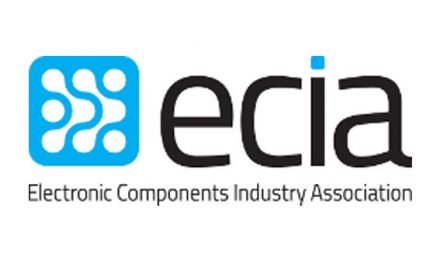Meeting Mass Customization Demands with 3D Printing
Today’s buyers are different than previous generations. They are living in a world of customization, where they can instantly download apps and customize their phones, their thermostat knows their preferences and they have uninterrupted access to music, movies and books. The empowerment gained by digital experiences delights us as individuals. Instant gratification has become a critical element in the consumption of information and goods.
First published on Jabil’s Blog: https://www.jabil.com/insights/blog-main/meeting-mass-customization-demands-with-3d-printing.html
The expectations developed through interactions in the digital world fuel those same expectations for the physical world. This is why consumers won’t settle for what everyone else already has. They demand something unique to match their interests and habits, while showcasing their individuality.
Mass Customization: An Old Concept for the Digitally Savvy
Investopedia defines mass customization as “a marketing and manufacturing technique that combines the flexibility and personalization of custom-made products with the low unit costs associated with mass production.” In simple terms, it’s about giving the customer what they want, while still making a profit.
Mass customization has been the next wave of innovation in product strategy since the 1970s. However, until the digital takeover of trends like social media, e-commerce, mobility and omni-channel marketing, the last-mile of connecting with consumers wasn’t yet sufficient to warrant a transition to mass customization. Various brands over the years have taken a shot at mass customization, but have disappointed due to execution or market conditions.
A Bain survey of more than 1,000 online shoppers found that 25 to 30 percent are interested in trying customization options. Consumers feel emotionally attached to products with which they had input in creating – this feeling fosters loyalty, repeat purchases, and higher lifetime value to a brand or company.
Our current digital landscape enables customization of relatively simply products. But as we consider products and technologies with greater complexity, customization—even in the most simple form of delayed configuration—strains traditional manufacturing methods and leads to increased production costs and extended timelines.
How can companies build complex products for mass customization? How can they speed time-to-market and beat competition? The answer is becoming clearer with additive manufacturing.
In a traditional manufacturing setting, mass customization means smaller batch sizes and production runs. Between each run, tools must be changed and the next batch must be set up, which increases the time spent between production. Lost time in productivity means higher costs and can make the overall process unsustainable.
By its nature, additive manufacturing doesn’t require tool or mold changes, which means it eliminates much of the time and cost associated with production change-over. The process is simple: send the digital file to the printer, print, clear the build unit, and repeat. There are very specific use cases where using 3D printing for mass customization makes a lot of sense.
Mass customization is often discussed in the context of a lot size of one – where a product is designed entirely for an individual. However, in industries like automotive, traditional manufacturers have the opportunity to go from batch sizes of 1,000 or 10,000 down to 100 with additive manufacturing.
But let’s take a look at an industry already benefiting from customization through 3D printing: dentistry. Already worth upwards of $780 million in the dental market, 3D printing could become a $3.1 billion industry in this sector by 2020, according to a report released by SmarTech. Dentists are able to create some of the most personalized products through 3D printing at lower cost and faster: teeth, orthodontic models, crowns, bridges, dentures and even surgical tools.
Mass Customization in the Footwear Industry
Let’s examine another industry: footwear. Everyone would benefit from a personalized shoe. That personalization could be simply the sole, to make it more comfortable, but it could also be a level of expression. Until now, 3D Printing was mostly used for low-volume baseline applications such as ski boots, high-performance running or in the largest case medical applications, but new technologies have recently made other use-cases, such as printed footwear, possible.
What’s changed in the last year is new classes of machines that have brought to manufacturing improved levels of performance, deliver parts that have a level of true mechanical properties and quality, and can be produced at a scale that makes it suitable for manufacturing.
With a $430 billion market at stake by 2024, 3D printing will help footwear brands cope with overwhelming demand for customized shoes while keeping costs down and profits high.
Benefits of Mass Customization Through 3D Printing
As with all things manufacturing, production costs, direct and indirect, remain the primary focus in making decisions. 3D printing generates cost-savings in everything from capital purchase, to eliminating tooling costs and productivity. Beyond that, however, it gives manufacturers an extra edge over the competition.
In a new product introduction scenario, it frequently takes numerous design iterations and prototypes before a product is ready for market. By utilizing additive manufacturing, the design cycle is ratably compressed and, in many cases, can be as short as 48 hours. That is a significant gain over traditional manufacturing methods. Not to mention, realizing a faster time-to-market is a key advantage that can help offset the near-term costs to deliver mass customization.
Inventory and distribution cost reduction is another area where 3D printing aids in justifying the higher costs of mass customization infrastructure and processes. Mass customization requires a diverse set of parts, where the ability to print parts on-demand can help manufacturers save considerably on inventory, storage costs, and when distributed, the cost of shipping.
Finally, mass customization provides a platform to collect valuable consumer data. When 3D printing enables your company to take on mass customization, you have access to a vault of new information you may not have had insights into before. This information can help you track trends and consumer preferences in real-time helping to enhance marketing efforts.
Mass Utilization of Mass Customization with Additive Manufacturing
The utilization of 3D printing is growing steadily, but collaboration with ecosystem partners within specific verticals will be key in driving innovation in the practice. Companies aren’t willing to take the risk alone. According to a recent 3D Printing Trends survey sponsored by Jabil, many companies are lined up to dive into 3D printing, but want to be a first-follower in their space, not on the bleeding edge. According to the survey, 67 percent of manufacturing companies characterize themselves as being able to move quickly in the 3D printing space, but only when they see others having success. Download the 3D Printing Trends survey report.
As 3D printing technology continues to advance, we are only seeing the tip of the iceberg. As production costs decrease and speeds increase, the possibilities for mass customization will continue to expand at a torrid pace. Traditional manufacturing may be the de-facto standard for most industries and may remain so in many verticals, but additive manufacturing will contribute to the transformation of those industries where value is realized by fully tailoring products to those choosing to consume them.













